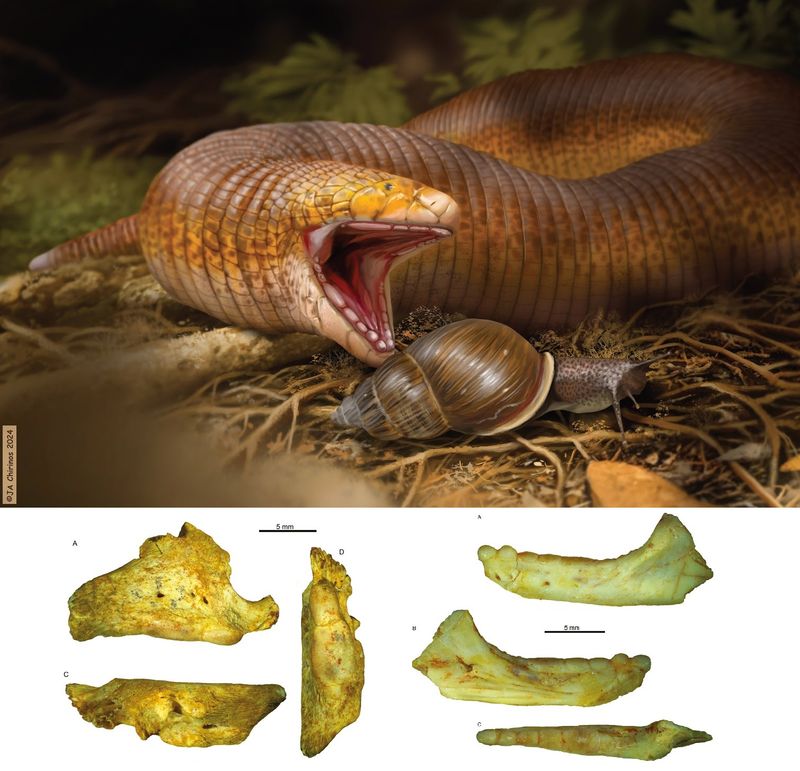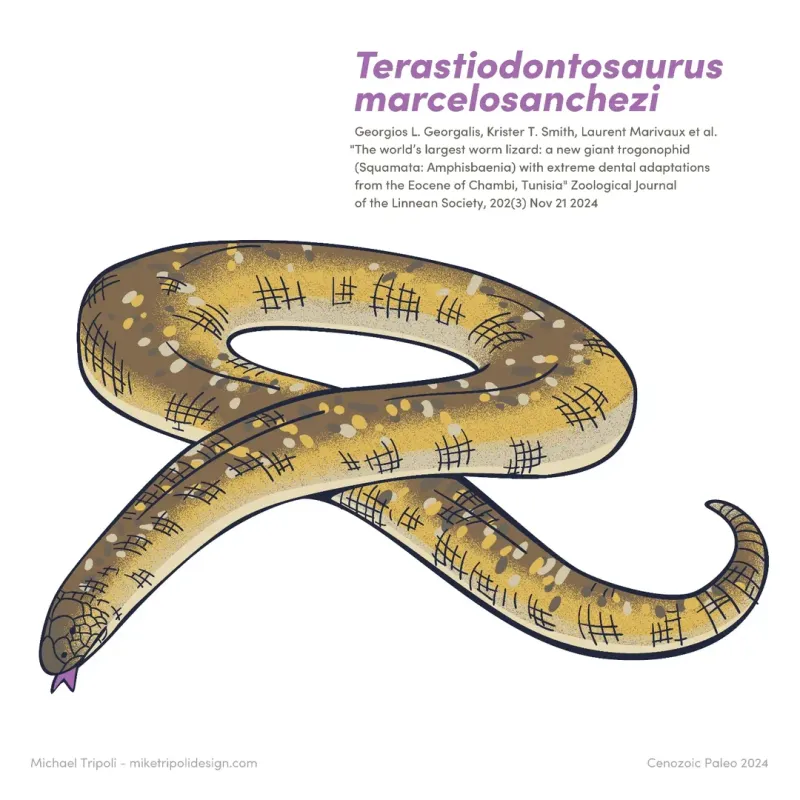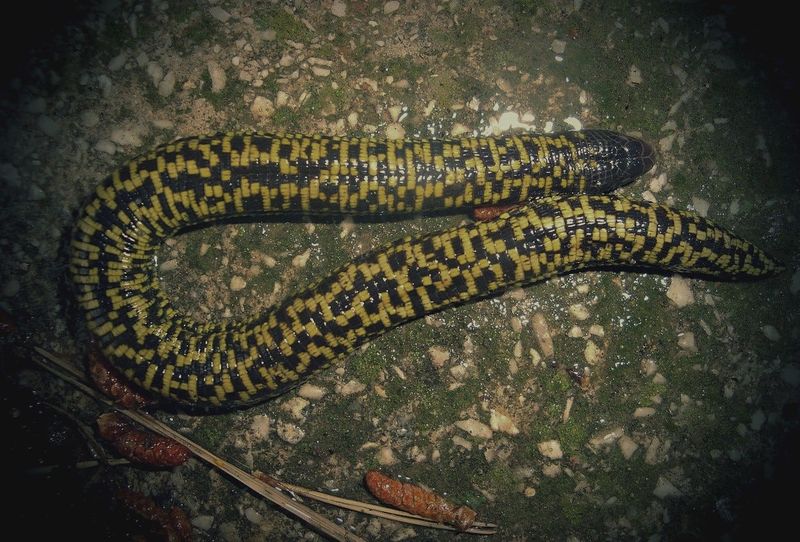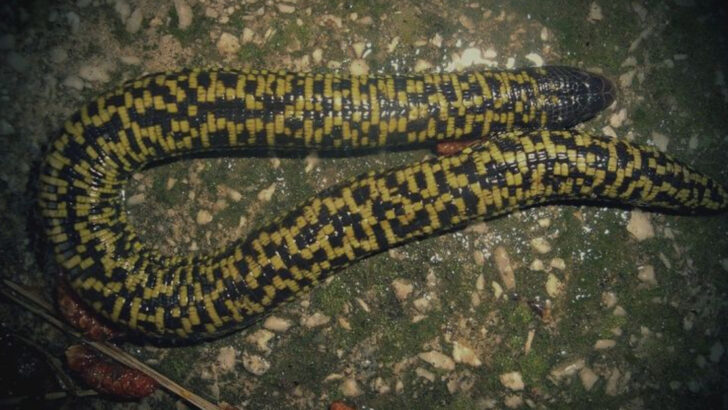Fifty million years ago, a creature slithered beneath the earth—huge, burrowing, and built like something out of a nightmare.
Scientists have just uncovered the fossil of a massive worm lizard, and it’s unlike anything seen before. Picture a limbless reptile, thick-bodied and powerful, tunneling through ancient soils with a skull designed to smash through whatever stood in its way.
This isn’t some tiny garden snake. This was a true underground predator, ruling a hidden world beneath the feet of early mammals. And until now, no one even knew it existed.
So what was this giant burrowing beast? And how did it stay hidden for so long? Let’s dig into this incredible discovery and meet one of the strangest reptiles to ever roam the Earth.
The Discovery Site

The discovery of the giant worm lizard fossil took place in North America, nestled within sedimentary rocks dating back to the Eocene epoch. This period is known for its warm climate and lush vegetation, which supported a diverse range of life forms. Paleontologists, working tirelessly in this remote location, stumbled upon the fossil, sparking excitement and intrigue within the scientific community. The site’s unique geological features provided perfect conditions for fossilization, preserving the remains in exquisite detail. This remarkable discovery not only sheds light on the creature itself but also offers invaluable insights into the broader environment of its time.
The Ancient Giant Worm Lizard

The giant worm lizard, a fascinating creature of the past, boasted an elongated body and short, sturdy limbs, adapting perfectly to its environment. Its discovery has provided a rare glimpse into the evolutionary history of reptiles. This ancient predator likely played a crucial role in its ecosystem, preying on smaller animals and insects. The fossil reveals intricate details of its anatomy and lifestyle, such as its unique feeding habits and potential social behaviors. Understanding this creature’s role in the food chain helps paleontologists reconstruct the dynamics of ancient ecosystems, shedding light on the evolutionary pathways that led to modern reptiles.
Implications for Modern Science

The discovery of the giant worm lizard fossil holds significant implications for contemporary science. Researchers are utilizing cutting-edge technology to analyze the fossil, unraveling the mysteries of its genetics and evolution. These findings contribute to broader scientific discussions about climate change and biodiversity. By examining how ancient species adapted to their environments, scientists can draw parallels to today’s ecological challenges. This discovery underscores the importance of preserving our natural history, serving as a reminder of the intricate connections between past and present life. Ultimately, such research provides valuable insights that could inform strategies for conserving modern biodiversity.

